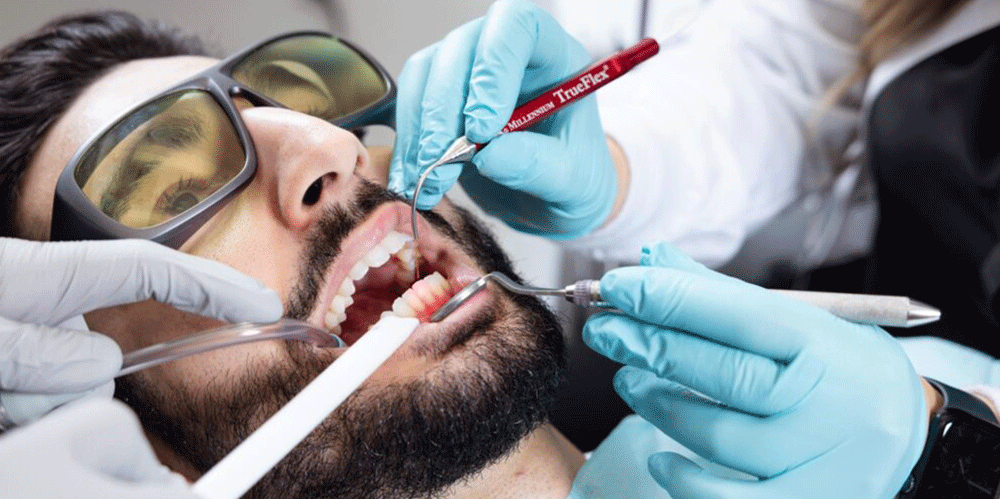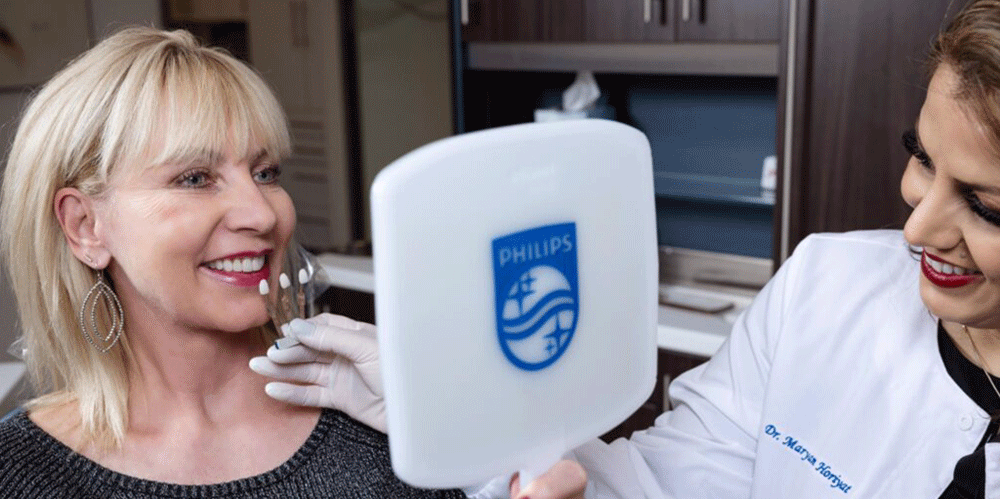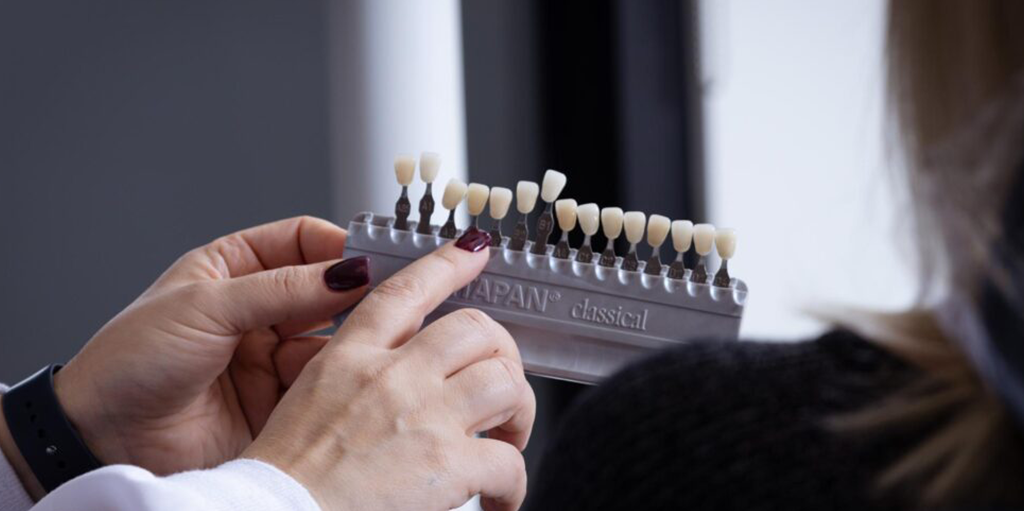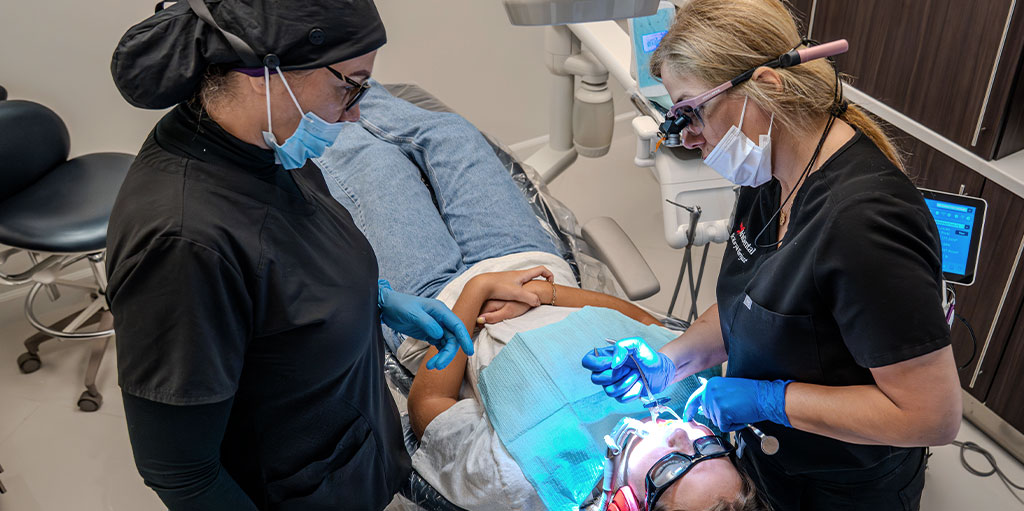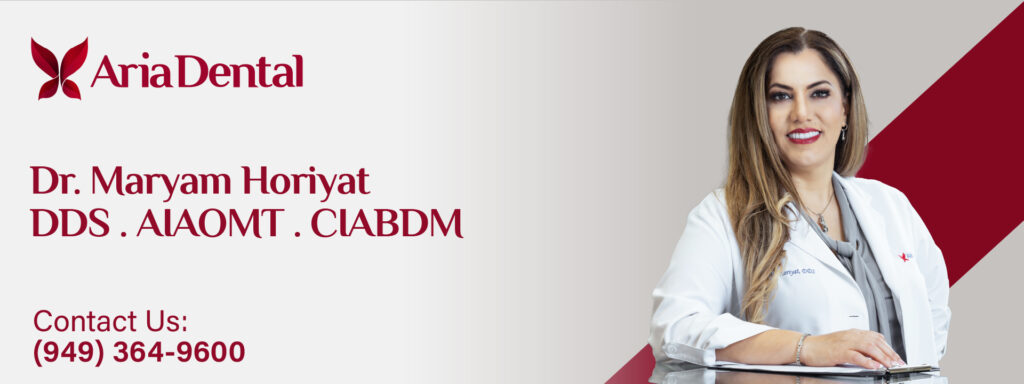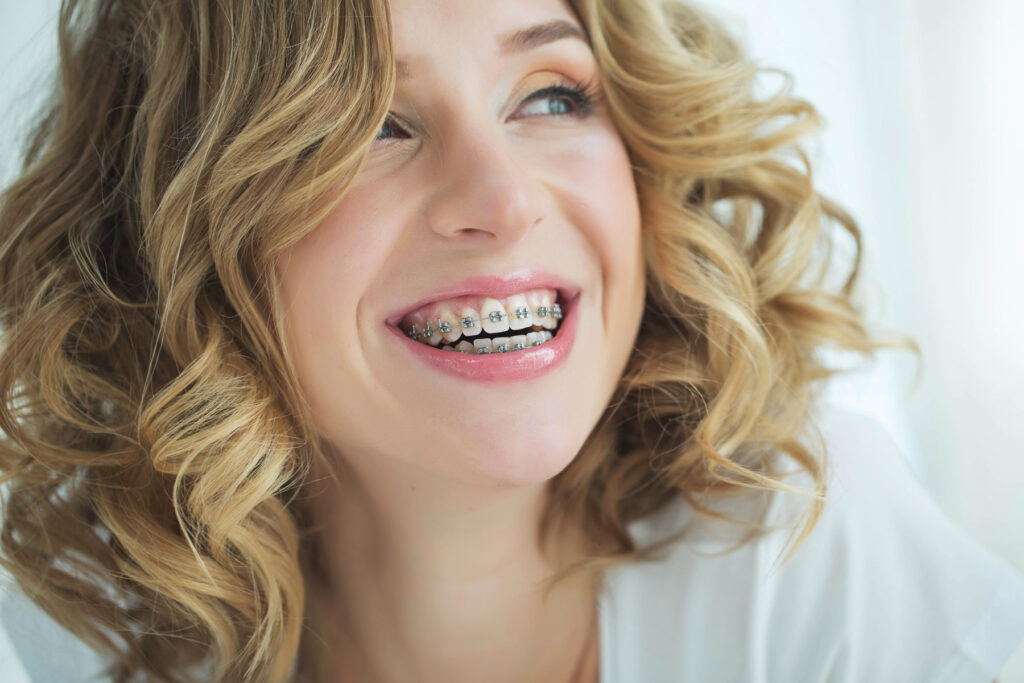Dental anxiety can prevent many people from having a beautiful smile. Sedation Dentistry can help such anxious patients, or those requiring extensive treatment, tolerate the procedure more calmly. There are different types of sedation dentistry, including oral conscious sedation, intravenous (IV) sedation, nitrous oxide (laughing gas), and hospital based general anesthesia. In this article, we will introduce you to sedation dentistry, its benefits, its risks, and answer all the questions in your mind.
What is sedation dentistry?
It’s time to say goodbye to the fear, anxiety, and negative memories you’ve had with dentistry in the past. In brief, with sedation dentistry, an expert gives medications to the patient so that they become comfortable during the process.
These medications make you conscious but feel numb and carefree. But, based on the dental sedation method, you may fall into a deep sleep. Sedation can be provided orally, by inhalation, or by injection. Some types of sedation require special training or certification to perform. Aria Dental experts, by completing special training programs and working extensively, can provide you with a calm and safe treatment using the most suitable type of sedation dentistry.
Is Dental Sedation Safe?
Dental sedation administered by a qualified professional is safe. Nonetheless, there are some conditions that you’d do well to consult. If you’re taking any medication or have ever had any history of allergic reactions to medication, your doctor ought to know.
Drowsiness, dizziness, and nausea are some of the possible side effects of sedatives. These side effects are not worrisome and will go away after a while. Therefore, sometimes it’s recommended that you have somebody drive you home after the treatment.
Who Benefits from Sedation Dentistry?
Oral sedation dentistry is beneficial for people of all ages. However, it is recommended for some people more than others:
- People who are afraid of needles
- People who are anxious or have previous trauma
- Those who are extremely bothered by the sounds, smells, and tastes of dentistry
- Children (to prevent possible traumas)
- People with disabilities or special needs
- Those who have an overly sensitive gag reflex
- Individuals with overly sensitive teeth
- Those who have difficulty controlling their movements
Other people who experience certain conditions and can’t easily use dental services will also have a much better experience with the help of dental sedation.
Types of Sedation Used In Dentistry
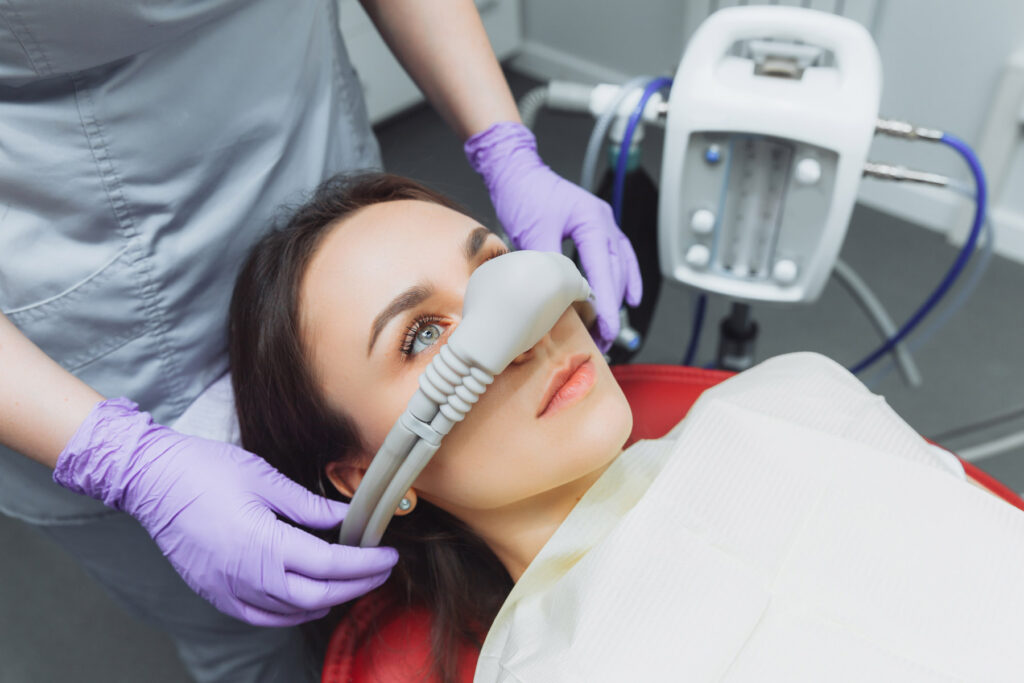
The type of sedation dentistry you choose will depend on your anxiety level, medical history, duration of the treatment session, and your own preference. At Aria Dental, we offer several types of sedation, and you can have even the most complex treatments done with absolute ease.
Nitrous oxide (Laughing Gas)
This procedure involves the use of nitrous oxide, or laughing gas, to calm the patient. Your dentist will place a mask or nosepiece over your face, and you will inhale a predetermined quantity of nitrous oxide. The gas will enter your bloodstream and reach your brain within three to five minutes. In the brain, nitrous oxide works on specific receptors, causing the release of endorphins and serotonin, which produce feelings of relaxation and pain relief. The dose of nitrous oxide is determined and controlled by your dentist.
After the treatment is completed, pure oxygen will be given by your dentist to assist in cleansing the nitrous oxide from your body. The sedative effects of laughing gas wear off as quickly as they begin.
Oral conscious sedation
This method is sufficient for mild anxiety. Your dentist will give you an oral sedative (in the majority of instances, a benzodiazepine, such as triazolam or diazepam) about an hour before the procedure. For children, the dentist might prescribe a syrup, such as midazolam oral syrup.
These medications will cause drowsiness, and you may not remember details very well after the treatment. These medications have residual effects, and thus, you will probably need someone to take you home; this may be a friend or a member of your family. You might have to abstain from food for a few hours before taking the medication.
Intravenous (IV) sedation
This procedure is used most often with patients experiencing severe dental anxiety or who are undergoing long dental treatments. Intravenous sedation dentistry is the deepest form of conscious sedation that a dental practice can provide. Sedation medication is injected directly into your bloodstream by your dentist through an intravenous line.
During the procedure, your dentist will be monitoring your oxygen saturation, heart rate, and blood pressure, varying the dosage of the medication in each step, and can give reversal medication as and when needed. The majority of patients do sleep off during the treatment and do not remember it. The patient, after IV sedation treatment, will be able to go home with a companion.
Hospital Based General Anesthesia
General anesthesia is the deepest type of sedation, performed in a dental clinic or hospital under the supervision of an anesthesiologist. Under general anesthesia, you are completely unconscious and will have no memory of the procedure. This procedure is suitable for very extensive dental work, surgeries such as TMJ, and for patients with severe anxiety or special needs. Aria Dental doesn’t provide general anesthesia.
Choosing the Right Type
Your dentist will guide you on the best method. During this initial consultation, your dentist will talk to you about your medical history, medications, and level of anxiety. Your dentist will have a thorough review of your health and will recommend the most appropriate sedation method based on your personal preferences.
What To Expect

Sedation dentistry involves several steps that are designed to reduce anxiety and increase patient comfort during treatment. These steps include an initial consultation and pre-treatment preparation, the implementation of the dental treatment, and post-treatment care.
Before Sedation Dentistry
Since you know, before starting the treatment, the dentist needs to conduct a complete assessment of your condition and determine the best Sedation Dentistry process for you. Additional tests are also possible, for instance, blood tests and X-rays.
You may need to avoid eating and drinking before sedation treatment (usually 6 hours before oral treatment and 2 hours before fluid treatment). Furthermore, if necessary, prescription medications, including blood thinners such as warfarin, must be discontinued under advice from the dentist.
During Sedation Dentistry
You will receive a sedative before dental treatment to help you relax. You may need to use local anesthesia for the procedure, but you will be much more comfortable thanks to the medication. You will be with a professional team from the moment of your arrival and will monitor your condition throughout the treatment. Therefore, the treatment process will be safe and comfortable.
After Sedation Dentistry
For most treatments, except nitrous oxide, you will need an adult to accompany you home. After the treatment, you will need to go home and rest for a while. Some memory loss and drowsiness are normal after Sedation Dentistry treatments and will subside very quickly.
The Advantages of Sedation Dentistry
Whether you are worried about visiting a dentist or prefer a more pleasant treatment, you can feel at ease thanks to sedation dentistry’s solutions. Even if you do not suffer from anxiety while at the dentist, sedation dentistry still has something to offer:
- Sedation can be helpful if you struggle to sit for long periods by giving you physical comfort and mental ease.
- The pain caused by the procedure will fully diminish thanks to the sedatives and anesthetics.
- The anterograde amnesia is exceptionally desirable for your negative memories. Most dental sedation medications lead to temporary amnesia.
- With Sedation Dentistry, there is a chance to combat dentophobia, especially in children who have not yet had any unpleasant dental experiences. Since they won’t feel any pain during the procedures, regular visits to the dentists will be a happy, friendly occasion rather than a horrific memory.
- Sedation dentistry can save you time by giving your dentist the opportunity to perform multiple procedures at once. Since sedation keeps you still for an extended period, your sedative dentist may be able to complete all the necessary treatments in one or two visits.
- It is also beneficial for patients with sensitive gag reflex who find it challenging to keep still while at the dentist. A gag reflex helps the throat expel any intrusive and foreign object, but it can interfere with your dental work. Sedation paralyzes the gag reflex, which will help you to feel more comfortable, and your dentist to work more efficiently.
The Risks of Sedation Dentistry
Sedation dentistry is a comfortable and safe procedure. Despite all the benefits of this procedure, there are also risks that you should be aware of:
- Remaining bruising at the intravenous injection point
- Prolonged drowsiness
- Nausea and vomiting
- Dry mouth
- Allergic reactions to medication
- Headache
If your treatment is performed by a trained and experienced dentist, the risks are minimized, and the doctor will monitor your condition throughout to ensure that you are doing well.
Sedation Dentistry for Children
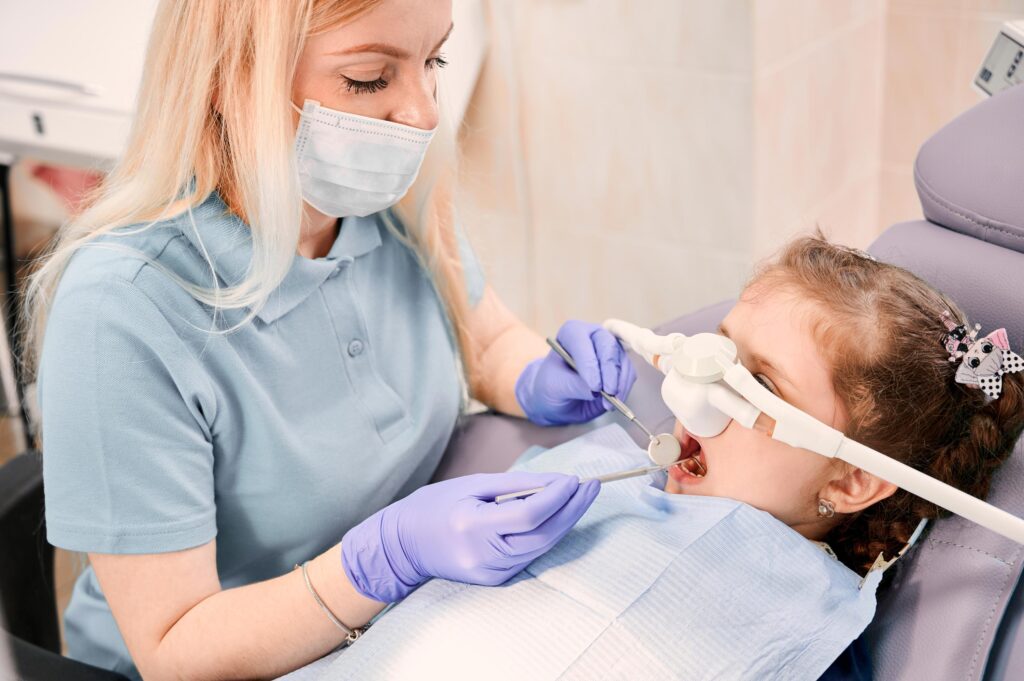
Sedation dentistry is safe for kids. As children are not very cooperative during dentistry and may have bad experiences, this is the best method for them. Parents also have fears of their own and are concerned about the use of medication and side effects. Sedation in pediatric dentistry needs to be administered by a pediatric dentist or an anesthesiologist, and the patient is being watched. But check with a doctor first and dispel any doubt. Drowsiness, fever, and nausea are possible side effects of sedation in children and will resolve within a day or two.
Sedation Dentistry for A Pregnant Woman
Sedation dentistry is not usually recommended during pregnancy as some medications can affect the baby. During pregnancy, one should always attempt not to do cosmetic and unnecessary dental treatments and only do necessary treatments that help the health of the mother and baby. So it is necessary to consult your doctor about this. In case it cannot be avoided, the second half of pregnancy (weeks 14 to 27) would normally be the best time to have dental procedures because the fetus is already formed and the risk of miscarriage or premature labor during this period is low.



